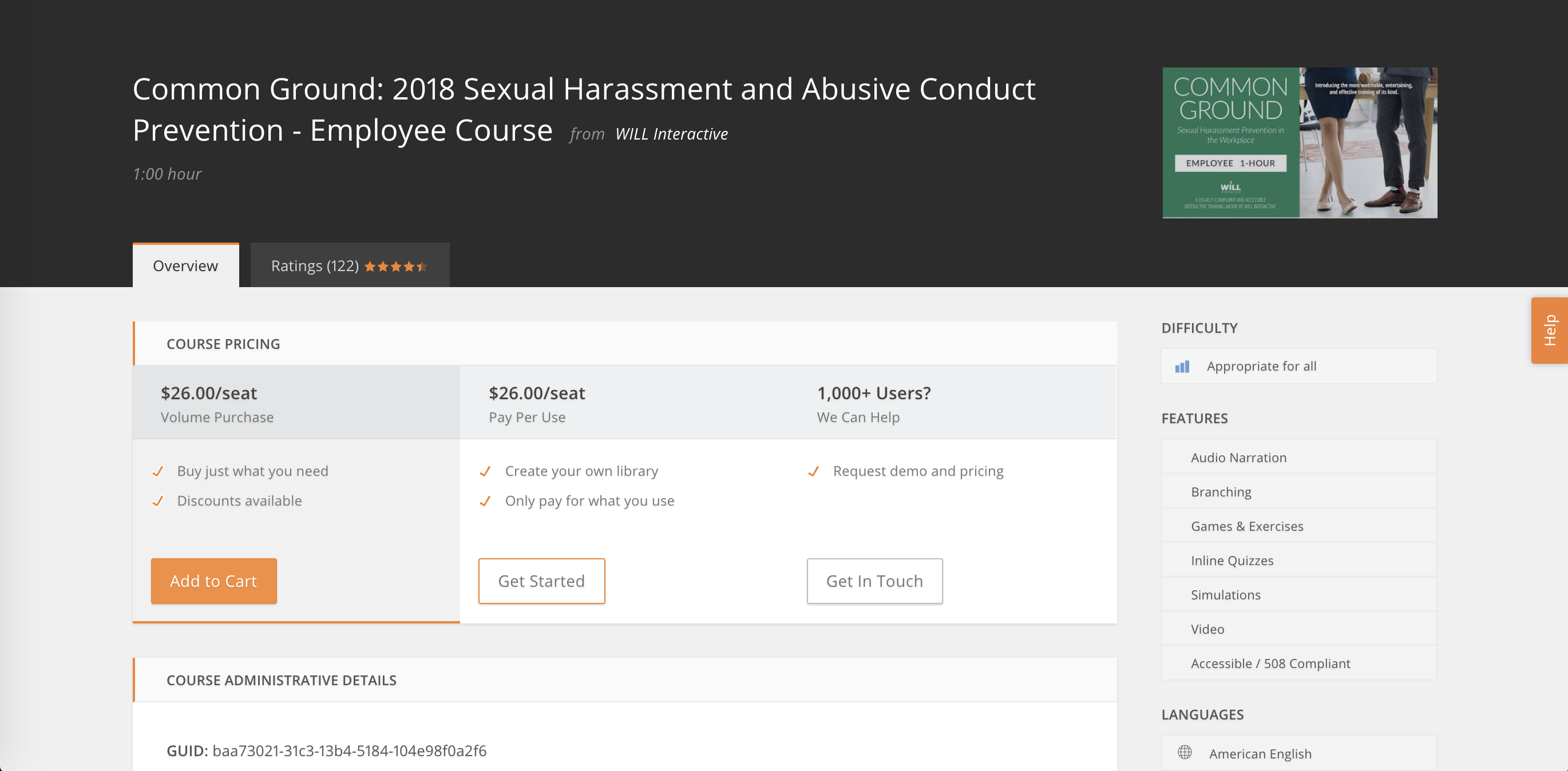Taking Steps to Prevent Sexual Harassment at Work
.jpg?itok=NgLyddnT)

In recent news, all too often we're seeing that sexual harassment is continuing to be a pervasive issue. Why? And how can companies better support employees?
We're an elearning company and our primary focus is on training. Oftentimes many companies aren’t aware of how to support employees or how important it is to take steps to prevent harassment in the first place. That’s why OpenSesame is releasing a free Sexual Harassment Prevention training course for the entire month of April in honor of Sexual Assault Awareness Month.
Why learn about sexual harassment prevention?
Sexual harassment is an unfortunate reality. In 2016 alone the Equal Employment Opportunity Commission (EEOC) received an estimated 12,860 filed complaints of sex-based harassment. In a recent TechCrunch article about pervasive sexual harassment issues at tech companies, training is highlighted as an important first step in prevention. As mentioned in the article, many managers aren’t properly equipped with the information they need to navigate a conversation around harassment. Furthermore, for people experiencing harassment, it’s not always clear what constitutes harassment or what options there are to move forward. As companies seeking to provide the best work experiences for our employees and teams, it’s our responsibility to take steps to ensure that all employees have equal access to equivalent, respectful treatment at work.
Preventing sexual harassment at work
Training is an imperative first step in creating a safe workplace and should not be confined to training for just employees. To begin to foster a harassment free culture, it’s important for managers and supervisors to also have a prominent role in training. Although training itself cannot undo decades of institutionalized discrimination and harassment in the workplace, it can have a role in shaping a better office environment.
Creating a better culture
Many times organizations focus on sexual harassment prevention training as a way of mitigating risk. We’d like to change the conversation to focus on building a healthy culture. When training is centered to enhance the wellbeing of its constituents, a learning culture flourishes. A 2016 report from the EEOC’s Select Task Force also identifies executive involvement and training as suggested ways to combat sexual harassment at work.
Not sure how companies are getting started? The 2017 report from the National Association for Female Executives (NAFE) lists 60 top companies for executive women and details how each company is working to foster the advancement of women at work. Also, this list of UN Global Compact companies leading the way for women’s empowerment details different policies and opportunities global companies are creating for their employees. Harassment can happen to all identities and these lists provide interesting insights into what is working to support women specifically.
For the month of April, access our most popular course on sexual harassment and verbal misconduct prevention will be offered for free to consider for your training needs. Take the free course here.

Information about the course:
-
Learn how to recognize harassment, sexual harassment, and abusive conduct
-
Discover strategies to prevent harassment and abusive conduct
-
Understanding your rights and responsibilities
-
Know the resources available to you
-
Practice your knowledge in scenario-based decision making
For more information about sexual harassment and harassment prevention courses, check out these other OpenSesame links:



